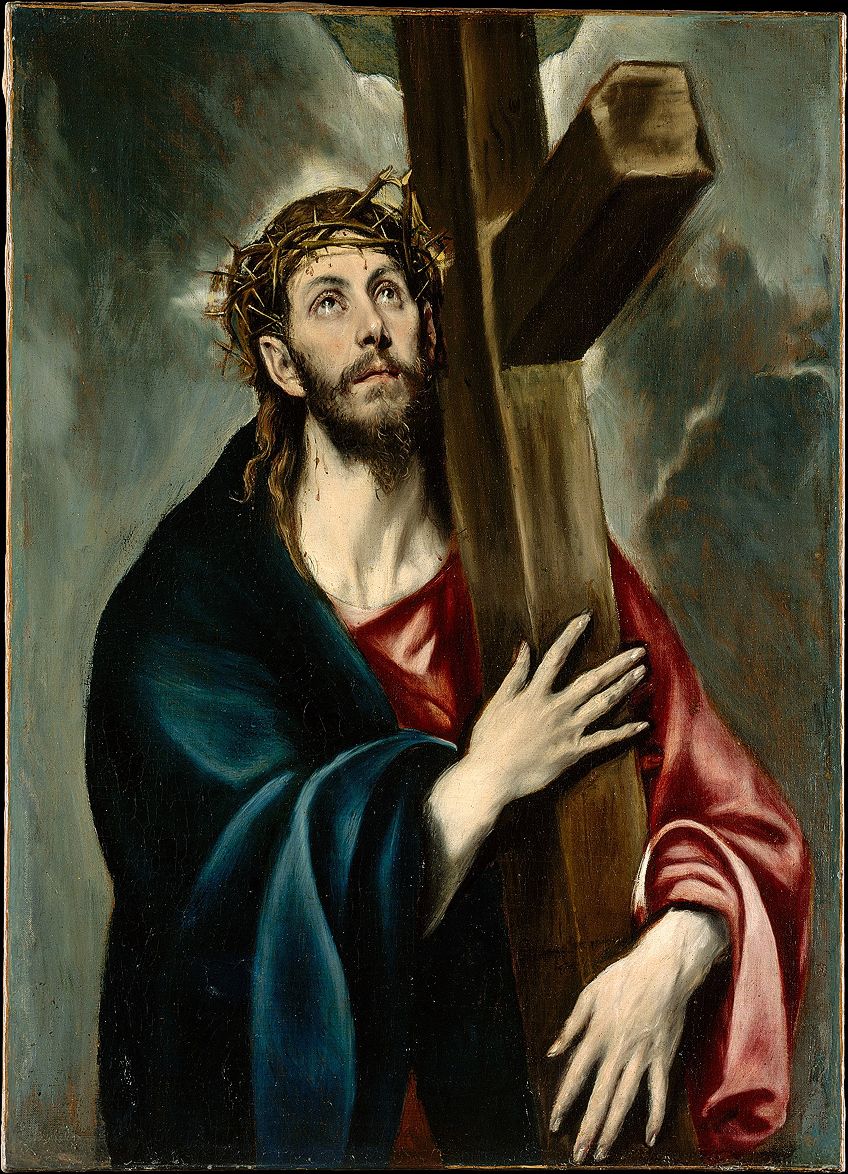Rather than counting days of the month individually, early Romans had 3 principle days in a month & used to measure days from there. These were:
Kalends – beginning of the month
Nones – roughly one week into the month
“X” – middle of the month
While the first two are obscure, the third “X” is widely popular in a particular context which is regarded as a day of tragedy.
Identify X & why it might be popular?
Category: History
[141]
Signed in 1215, X was a document between the then King of England to establish a rule of law & to give rights to the barons.
Over the years the document has become an inspiration behind the Universal Declaration of Human Rights, the American Constitution & even historical figures like Gandhi & Mandela.
Identify X.
[140]
The “X Meter” is a phenomenon where there was a sudden influx of business for providers of X in areas with concentrated US government activity (like Washington DC, where the White House and the Pentagon are located) just before major world events in the 1980s and 90s (notable examples being the first Gulf War and the US invasions of Panama and Grenada.)
This was first noticed in 1990 just prior to the Iraqi invasion of Kuwait, when CIA personnel gathered at the Pentagon to discuss the ongoing issue, and one Frank Meeks realized a lot of his business traffic during that time (especially at night) was directed at the Pentagon. Business continued to boom right into 1991, with business spikes very reliably tied to major announcements from the White House and the Pentagon, a series of events the public dubbed the “X Meter”. Similar trends were spotted in hindsight in the 80s.
Naturally, the powers that be weren’t too amused by this trend being publicized, and government offices were instructed to change their tactics to break this pattern.
What is the X in question?
[134]
Connect.


[125]
In 1983, Mr Harpal paid a princely sum of Rs 47,500 to purchase this. It was such a big deal that it was handed to him by then Prime Minister Indira Gandhi.
What did he purchase?

[122]
Apeks, Atomic Aquatics, Cressi, Mares, Sherwood, and Zeagle are all popular brands of scuba regulators — but arguably the oldest and best known is another brand that shares its name with a famous 1971 rock “concept” album (and its title song).
What brand?
[117]
First time X was observed by the ‘outside world’ was when a group of French sailors happened to enter a town & saw the event.
The person was bathed, dressed in white robes, and served his favorite foods for a last meal. He would also prepare by writing a poem.
What am I talking about?
[116]
In his 1631 treatise Historiae naturalis et medicae Indiae orientalis, Dutch physician and explorer Jacobus Bontius wrote, of a tribe he’d encountered in the jungles of what is now Indonesia, that “the Malays informed him that the X could talk, but preferred not to, lest they be compelled to labor.”*
Bontius’ mention of X was the Western world’s first introduction to the name of this tribe, a word that passed from Dutch to Portuguese to English and is still used today in slightly modified form – ironically, even speakers of modern Malay and Indonesian use the European corruption of the name, even though its etymology lies in Old Malay.
Who are the X?
*Considering Bontius was there as part of a Dutch East India Company expedition, this was probably a very good idea.
[114]
Following a rather tepid album release in 1986, influential English artist X had a bit of a brainwave and released a seventh solo album titled (in Cyrillic) СНОВА В СССР in 1988, consisting entirely of live-in-studio covers of older (English) rock and roll songs, and distributed only in the Soviet Union on the Soviet government-run Melodiya label.
Soon after, though, copies of the album began popping up outside the Soviet bloc (which, in a way, had been X’s initial intention), going for anywhere between $100-$250 in the US and up to £500 in the UK. This eventually led to a global release of the album in 1991, notably with the title misprinted as “СНОВА Б СССР”.
Who is X?
[112]
The name of what casino, famous in its own right, took on another use in work by mathematicians John von Neumann and Stanislaw Ulam at the Los Alamos National Laboratory in the 1940s?
[108]
St. Burchardi Church is a nearly thousand-year old church in Halberstadt, Germany, just a short walk away from the famed Halberstadt Cathedral.

On February 5, 2024, fans flocked to the church to bear witness to a moment they’d been waiting for for two years. Another such moment is expected to occur in 2026, and there will be quite a few more after that.
What’s going on behind that unassuming stone face?
[107]
The origin of term X dates back to 16th century England, when spirits were taxed at different rates depending on their alcohol content. Spirits were tested by soaking a pellet of gunpowder in them and then setting the pellet on fire. Id X, a term commonly seen on alcohol bottles.
[106]
In the 1860s, Corsican chemist Angelo Mariani formulated Vin Tonique Mariani, a wine containing a little special ingredient that was said to give it medicinal properties. Mariani claimed it would “restore health, strength, energy and vitality” to those that drank it – and to be fair, it did receive glowing endorsements from many notables of the time, including Thomas Edison, Ulysses Grant, and even Popes Leo XIII and Pius X (Pope Leo actually awarded Mariani a Vatican gold medal for inventing it.)
Naturally, this being the late 19th century, Mariani’s recipe was swiftly duplicated and recreated by others to sell copycat products – including enterprising American pharmacist X, who added yet another special something to the formula. He named the resulting concoction after himself and marketed it as a panacea, accompanied with fantastic claims of it being “a most wonderful invigorator of the sexual organs”, among other things.
Late 19th-century prohibition laws forced X to come up with a non-alcoholic version of the drink, though, and eventually Mariani’s special addition was also removed, resulting in an early version of something that is still popular today.
Who is X, and what did he invent?
[104]
In 1943, noted philosopher Jean-Paul Sartre released what is commonly considered his most influential existential philosophical work, a monolithic 722-page tome bearing the equally weighty title of Being and Nothingness: An Essay on Phenomenological Ontology.
One might expect that, with that name and that subject matter, the book would be nigh unknown to the general public, likely only finding an avid audience in tweed-wearing, high-thinking, pipe-smoking professorial types frequenting smoky salons, quaint libraries, and lecture halls — and yet, Being and Nothingness was (relatively) a runaway success upon publication, gaining purchase even among grocers and shopkeepers, and most notably, women*.
What peculiar reason caused the unforeseen popularity and amazing sales of this book?
[101]
This biscuit was created by the London bakery Peek Freans in 1874 to commemorate the marriage of the Grand Duchess Maria Alexandrovna of Russia to the Duke of Edinburgh.
It is popular today world over as a tea biscuit.
Can you identify it?
[100]
In Hawaiian, the word X means “to bake in the ground” – it can also be used to refer to the Hawaiian food (usually containing pork or turkey) cooked in this manner that is often served at feasts and has since become a major tourist attraction.
X is not to be confused with the very similar-sounding but completely unrelated Y, which is a coffee liqueur made from rum, Arabica coffee, and sugar. Y serves as a key ingredient in several cocktails, some more prominent than others.
What are X and Y?
[98]
The Scientific Revolution is commonly regarded to have been in full swing at the turn of the 17th century, and it was right around this time that a German scientist came up with a quick and easy (for the time, at least) nomenclature system for his particular field of study. This system, named after the scientist himself, originally consisted of a lowercase Greek or Latin letter that (loosely) pinpointed a particular attribute, coupled with a specific set of Latin words that worked to swiftly assign names to what he was working on.
The system has since been tweaked and expanded by other scientists building off of his work, but is still very much recognizable and in use today.
What is this naming system called, and what does it classify?
(Bonus: In an interesting overlap, one of the subjects of study under this classification indirectly inspired the name of a former Formula 1 team.)
[96]
Jean _____ was a French diplomat and scholar, in 1560 & introduced a plant in the French court initially for medicinal purposes. This introduction gave rise to a culture associated with the plant and its eventual dissemination and popularization throughout Europe.
Name the plant and tell in what way the French diplomat’s name was immortalized later by Carl Linnaeus?
[95]
During Marco Polo’s visit to India, he came across a plant that looked like dates, also known as ‘tamar‘ in Arabic.
It was also referred to as ‘Tamar-ul-Hind’, or Date from India.
What do we call it today?

[94]
In the 1800s, with Britain’s Industrial Revolution in full swing, English workers and craftsmen began to find themselves in increasingly tight competition with the advanced mechanization and factories that enabled mass production of goods, combined with underhanded labor practices implemented by the top bosses in control of those factories to squeeze out as much product as possible.
Naturally, some of them expressed their resentment by going on a violent rampage against the machines that were destroying their livelihoods. Most legendary of these was “X”, who as the tale would have it, smashed two knitting frames in “a fit of passion” — an action that would result in his name being used for the entire movement. The name is still used today to refer to individuals who find themselves particularly opposed to modern technology and its ubiquity.
Who is X?